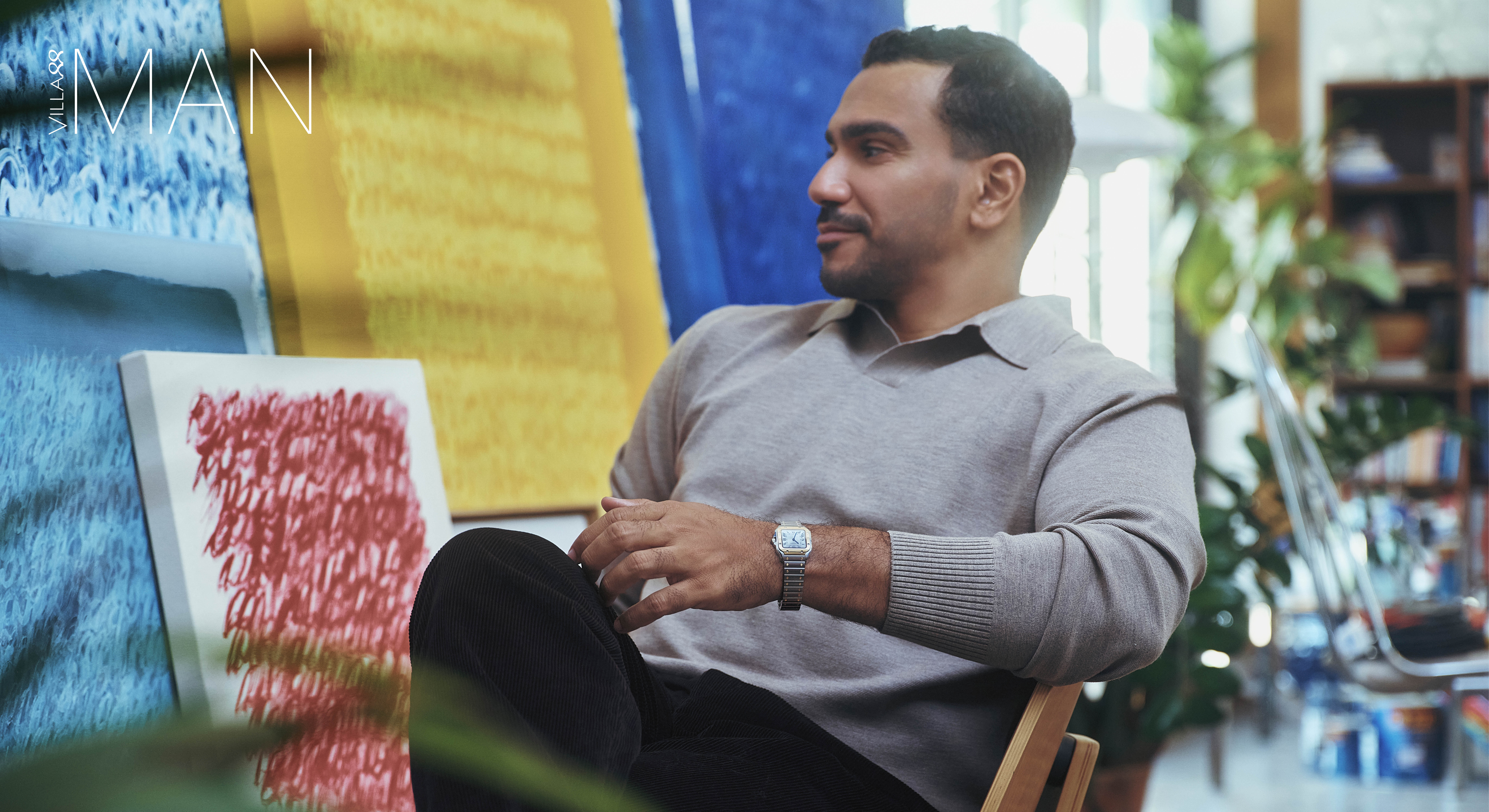
Juma Al Haj loves words. It’s not only their meaning, but also the way they curve and collide on the page. His works, more abstract than literal, pay homage to the architectural peaks and troughs of Arabic calligraphy. And through his brush strokes, he somehow manages to express emotion behind characters (despite them being unreadable). Each inspired by pages of his own thoughts written in journal form, his pieces are deeply personal yet subjective. “The text itself is illegible,” shares Juma. “But the strokes definitely reflect how I was feeling on that day.”
His passion for words and creativity began in childhood. Born in a home filled with books and academic debate, Juma grew up surrounded by literature. “It was always encouraged in our household to read, to research, to write, because my father is a political analyst,” he shares. “Both my parents wrote – my dad in his articles and poetry, and my mom in her sphere, in law. So, writing had a very important presence within the family.”
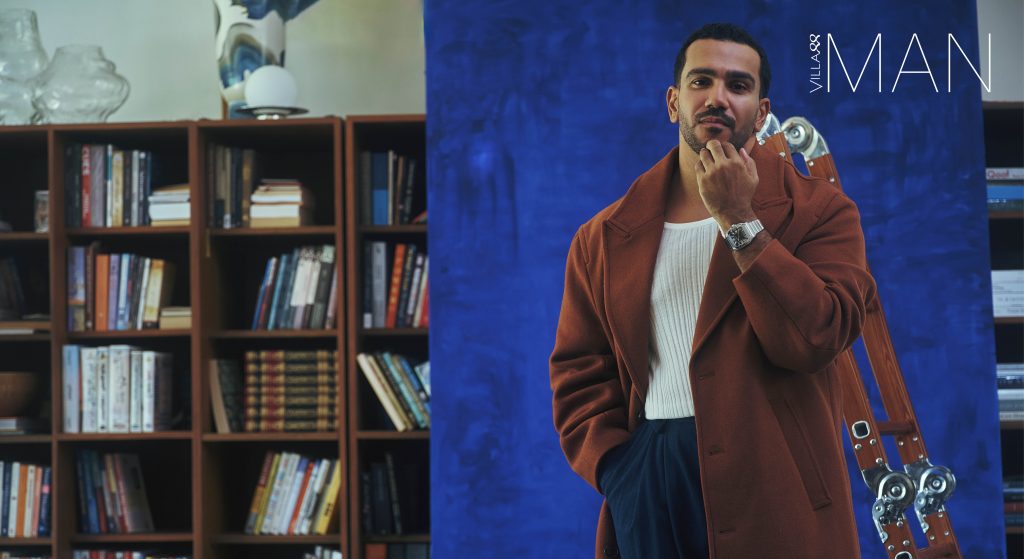
Because Juma’s father worked as a diplomat for the UAE, the family frequently moved around, spending time between Washington, D.C.; Spain; and the UK. “I think books and sketchpads were the only constant companions,” says the creative on his storied upbringing. “They were the only things I could easily take with me, and that’s how I was able to communicate and express myself. They gave me the stability I needed from moving from place to place.”
Noticing his love for art, his parents encouraged his creative process. “Both my parents were very supportive,” he says, “They introduced me to different forms of art – the Qur’anic manuscripts, the stained-glass windows in cathedrals, so I could see that art exists in everything. That was their way of supporting my interest.”
However, while relocation shaped the artist’s dynamic outlook on the world, it also meant that Arabic was harder for him to grasp. “I felt somewhat ‘less than’ by not being able to communicate in my native language properly,” reveals Juma sincerely.

So, he started working with a tutor to get a grasp of the language in written form. “One day, he said to me, ‘My son, improve your handwriting’. I took that to heart,” says the artist. Setting off on a pursuit to become a better writer, he “started learning the forms and shapes of the words, then how to loosen my wrist, and how to move my pen. I think that’s what influenced how I can abstract Arabic today.”
As his command of the language grew, so did his curiosity about the meaning of its words. “When I started researching words, I found that they were more powerful than people gave them credit for,” Juma says. With a passion for communication, he took the next natural step – journaling.
“I picked up journalling when I was in the States,” he explains. “It started as a school activity, but I made it my own habit because I saw that both my parents wrote often.”
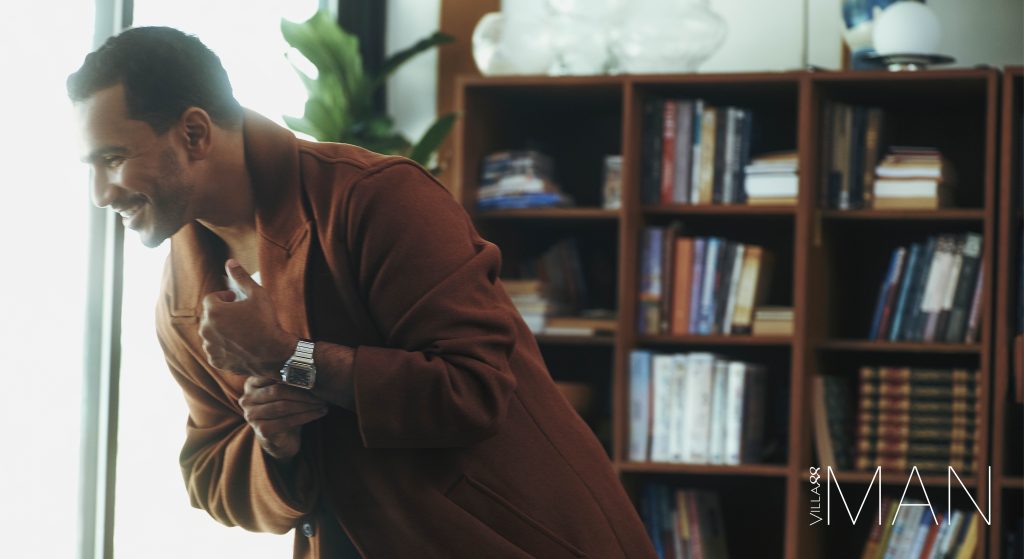
When he decided to move back to the UAE for university, Juma’s love for communication continued to grow. He studied Visual Communication at the American University of Sharjah, with a minor in International Studies, later going on to earn his Master’s in International Relations. But beyond his degrees, his biggest area of growth was in the understanding of his own heritage. “For me, coming back was the foreign experience,” he explains. “You think you’re part of that culture, until you actually live in it day to day.”
Fitting in was a struggle for the young Juma, who hadn’t grown up around his Emirati peers. “You’re seen as the outsider, the foreigner, the American,” he says. “I had to really tone down a lot of my creativity to fit in at that stage of life.”
That’s not to say he stopped painting. Conversely, he painted his way through the experience, using creative expression as his anchor, just like when he was a child. “I considered art like journalling, a private practice – something very meditative, something that calmed me down,” he shares.
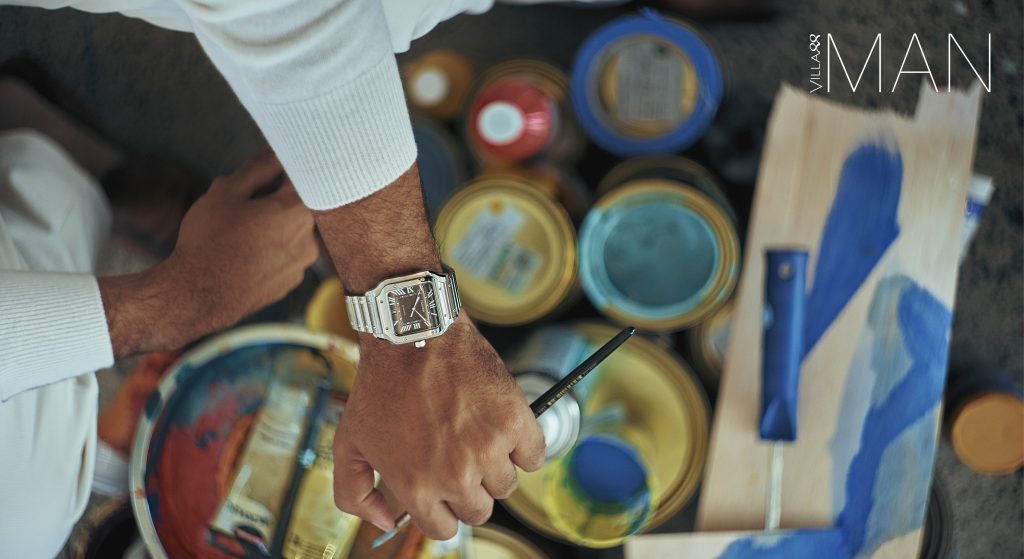
Upon finishing his studies, Juma described himself as ‘lost’. Trying to find a middle ground between his love of language and creativity, he entered the corporate communications and marketing world, which he still works in today.
Though corporate life gave him ‘credibility’ and an understanding of the ‘social-cultural playbook to use’, art remained his hidden passion.
And then the global Covid-19 pandemic struck. With the world turning inward, Juma made the decision to finally go public with his inner world. “I thought that was the right time,” he says. “I’d built my network through my professional life, and when I started posting [on Instagram], everyone was paying attention to their screens. It gave me the right audience and the right moment to finally share it.”

The response was immediate. People, stuck in their homes, found solace in Juma’s deeply personal text paintings that, despite being eligible, carried deeply private meanings. Though his diary entries have been deconstructed beyond recognition, the emotion is found in the colours and brush strokes themselves. “I always try to reflect the feelings in that journal entry into the pieces through different mediums that are inspired by words, but that are not literally words,” he shares.
Finally, his private practice had found voice in the public world. And just a year after sharing his work on social media, Juma put on his first solo exhibition, Frame of Mind, at the Foundry by Emaar. It was organised by Iris Projects, who now represent Juma. The retrospective showcased pieces from the last ten years of his personal paintings. Posing questions about the metaphysics of language and the boundaries of communication, the exhibition was met with rave reviews.
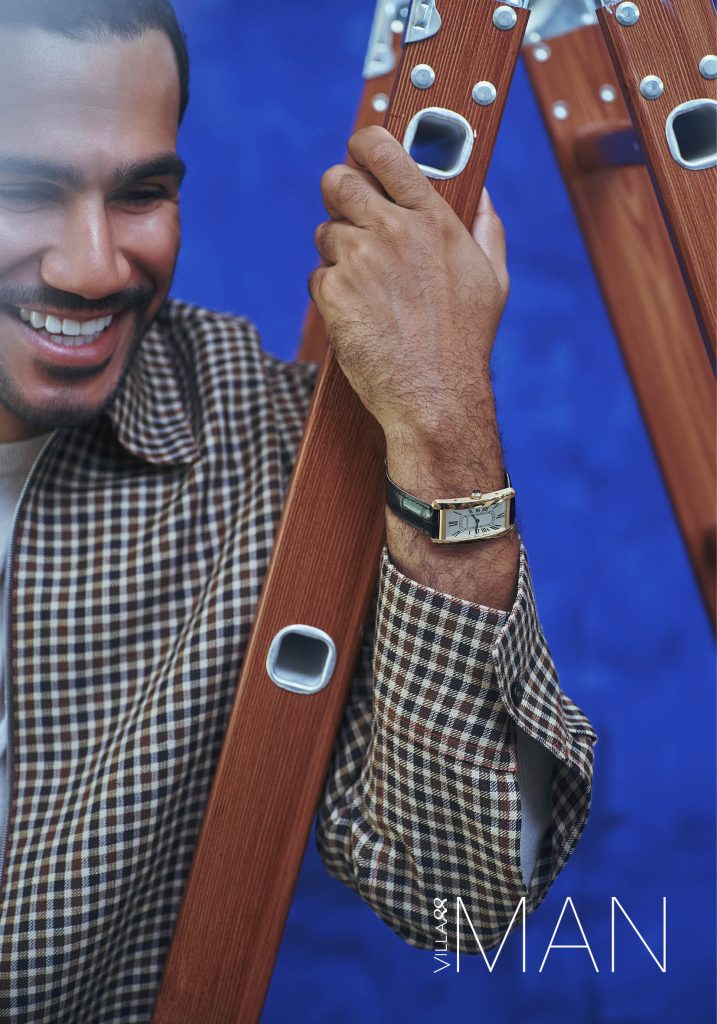
Following his debut, the artist has gone on to become one of the country’s most noted abstract artists. His work has travelled through the UAE’s key exhibitions, including the Dubai Calligraphy Biennale (2023), and the Sharjah Islamic Arts Festival (2021–2022). In 2024, he took up a residency at the Abu Dhabi Cultural Foundation, while also leading workshops at the Louvre Abu Dhabi and the Al Burda Festival. His works now form part of major collections, including the Barjeel Art Foundation and Qasr Al Watan, as well as appearing in the private collections of H.H. Sheikha Bodour bint Sultan Al Qasimi and H.H. Sheikh Mohamed bin Zayed Al Nahyan.
“What art gave me was notoriety and respect,” states Juma proudly. “It’s interesting how something that wasn’t seen as a proper career path became the thing that defines me. People don’t say, ‘He’s a director in such-and-such company,’ they say, ‘He’s the artist, Juma Al Haj.’”
After years of keeping his creative side hidden, Juma has finally found a rhythm. Working from his vibrant art studio in Sharjah, the artist says, “I’m beginning to recolour my life because I understand the balance of what’s appropriate and how far I can push the boundaries.”
Cultural nuance lies at the heart of his work. “I’m walking a very thin line right now between being completely influenced by globalisation and maintaining our cultural traditions.
“It can easily go right or left, but so far,” the creative says, “I think I’ve done a good job.”
This delicate balance of upholding cultural sensitivity is something he learned representing the UAE abroad as a child. “It was my entire experience growing up,” he notes. “You can push the boundaries, but you need to be culturally appropriate to the region.”
Now, Juma’s art is reaching beyond the 2D canvas. “My work right now is evolving,” he says with a smile. “I’m trying to turn it from canvas-based to sculptural-based.” This November, two new works will be unveiled in Sharjah – one at the Tanweer festival, the other at Base 39, the city’s new cultural hub.
His inspiration? Quotation marks. A fitting choice for someone with a deep love of language. “Quotes or sayings from other people influence our lives,” he explains. “Something a parent said, a bully said, or a phrase of encouragement, these words crystallise in our minds and shape how we live.”
It’s clear that Juma’s love of words continues to evolve. From page to physical, from personal to public. But, no matter in which form, his art takes it back to where it all began – his relationship with words.
What was once a young boy’s struggle to read and write Arabic is now a profound dialogue between emotion and comprehension. Juma’s paintings (and soon-to-be sculptures) profoundly echo this sentiment.
“Every community has its own language,” he says. “Even if you can’t read it, you can still connect through colour, through strokes, through placement on the canvas. So, whether you can read it or not, you can still feel it. That’s exactly how I used to feel when I couldn’t understand Arabic writing.”
And in that sense, Juma’s work is a translation of human experience.
Follow @jumaalhaj on Instagram
Cover photo: Juma wears the Cartier Santos De Cartier small model watch in steel and yellow gold with an outfit by Loro Piana.